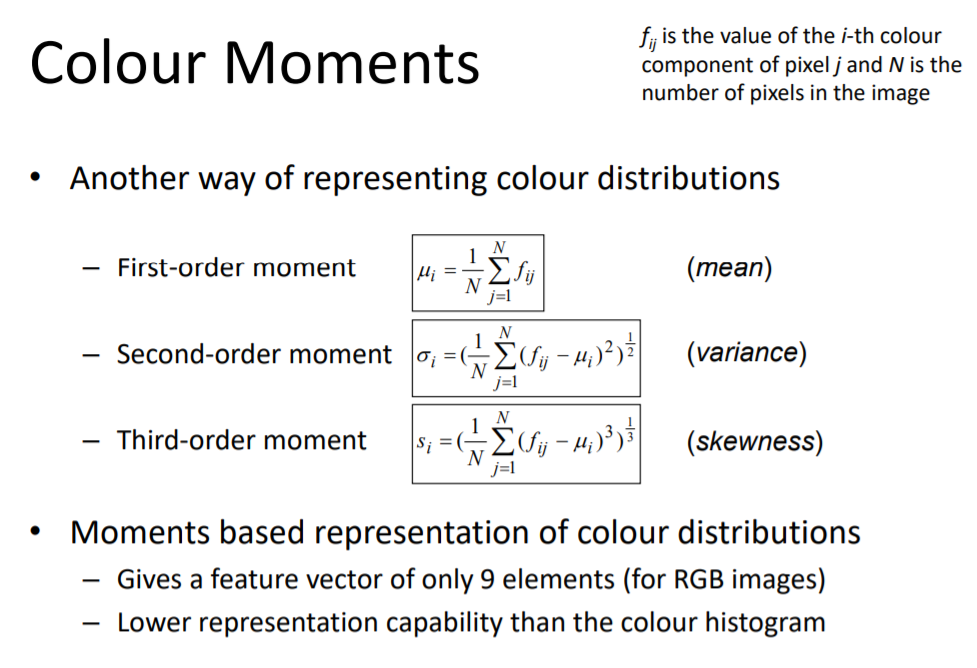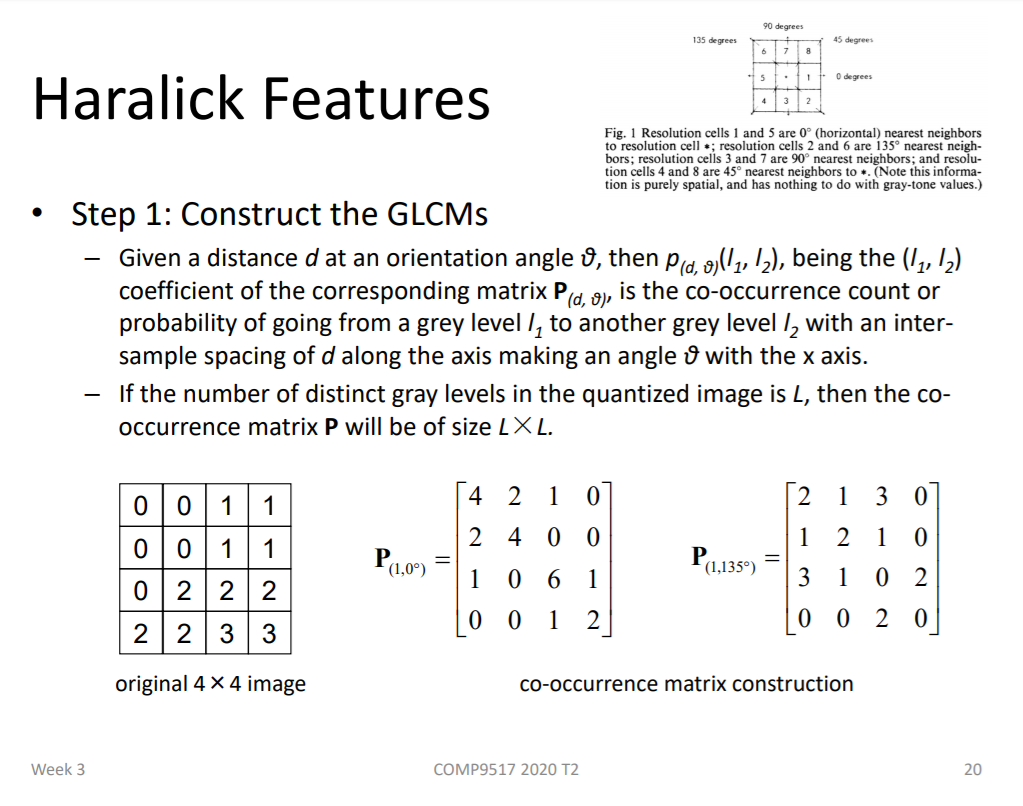https://echo360.org.au/lesson/61104790-7374-4fb6-90f9-e6727c6f20e2/classroom#sortDirection=desc
https://webcms3.cse.unsw.edu.au/COMP9517/20T2/resources/46773
总结:
目的:
1000*1000的图像就有一百万个像素点,如果以此来操作太computational-expensive。提取features更方便和robust

Intuitive examples of image features:
– Blobs 比如白云
– Edges from dark to bright
– Corners
– Ridges from dark to bright to dark again
– Circles
– Ellipses
– Lines
– Etc…
Colour Features:
1. Colour Histogram:
操作: RGB三色直方图,每色有256个可选intensity,直方图的高度即为每个值对应的pixels的数量,这样一个直方图可以用一个 256维的vector
RGB三色即有768维的vector,which is still very big and need to be reduced

2. Colour Moments:
1)只取RGB每个channel的 First/Second/Third Order,得到一个 9维vector,一般前两/三个Order就够了;
2)当然9维Vector没有直方图的768维Vector含有的信息多,我们需要做Trade-off。

Texture Features
1. Haralick Features :
1) 以下图为例,左一图为给定的Input,生成以距离,角度为参数的matrix;
左二图 P(1,0°)即为图中距离为1,角度为0°或180°中能互相到达的像素的数量
比如P(1,0°)[ 0,0 ] = 4; 即为左一图中,intensity 0 能到达 intensity 0 在距离为1的neighbourhood矩阵中,角度为 0°或180°,能互相到达4次。
即 Matrix[0,0] -> Maxtrix[0,1] Matrix[0,1] -> Maxtrix[0,0] Matrix[1,0] -> Maxtrix[1,1] Matrix[1,1] -> Maxtrix[1,0] 4次 (Matrix即为左一Input)
P(1,0°)[ 2,2 ] = 6; 即为 Matrix[2,1] -> Maxtrix[2,2] Matrix[2,2] -> Maxtrix[2,1] Matrix[2,2] -> Maxtrix[2,3] Matrix[2,3] -> Maxtrix[2,2]
Matrix[3,0] -> Maxtrix[3,1] Matrix[3,1] -> Maxtrix[3,0]
